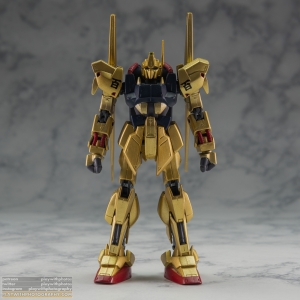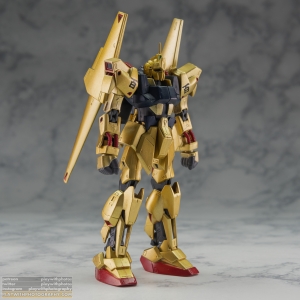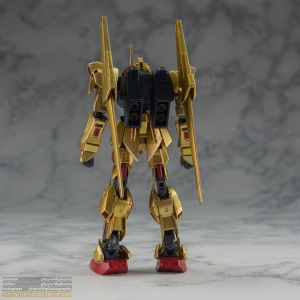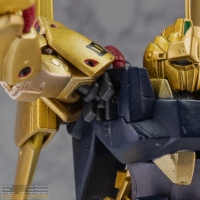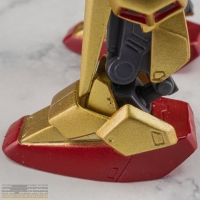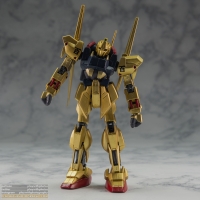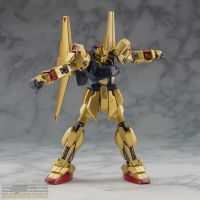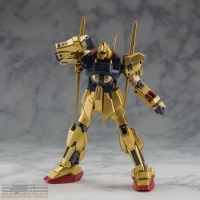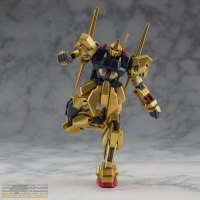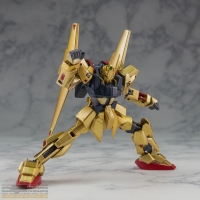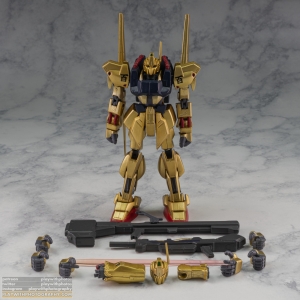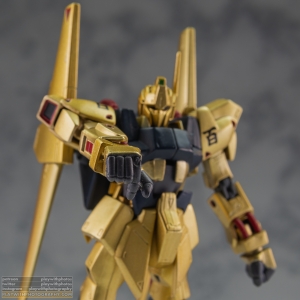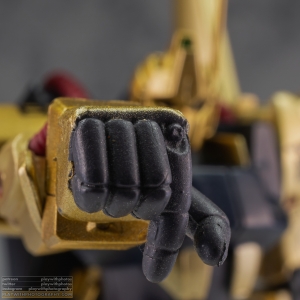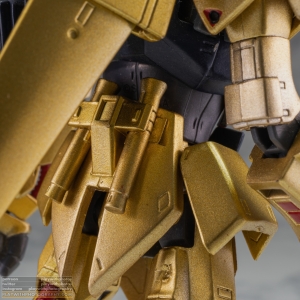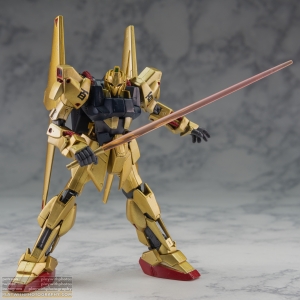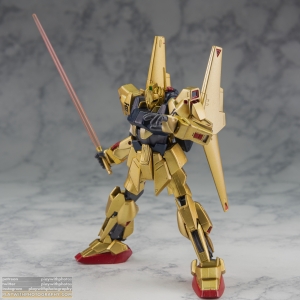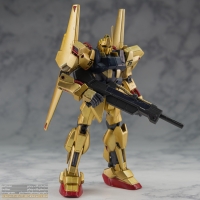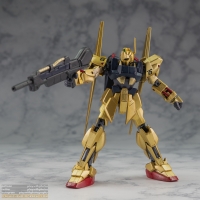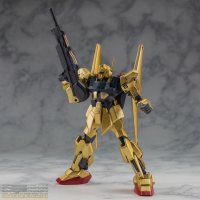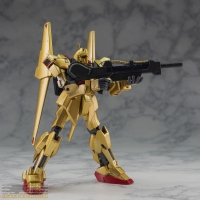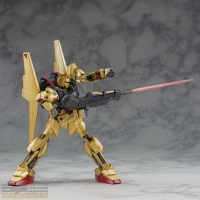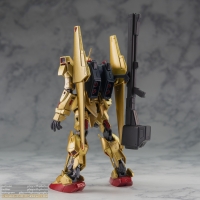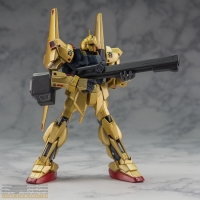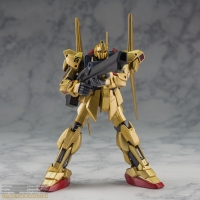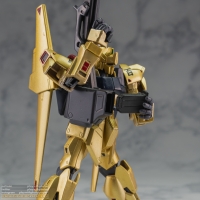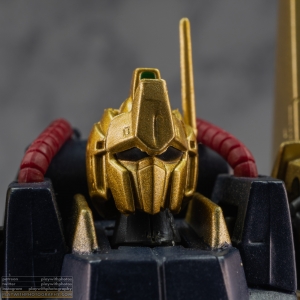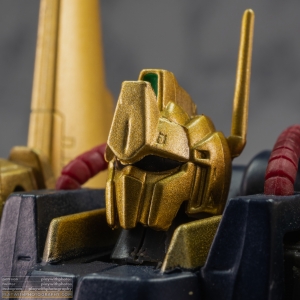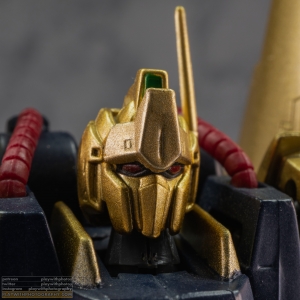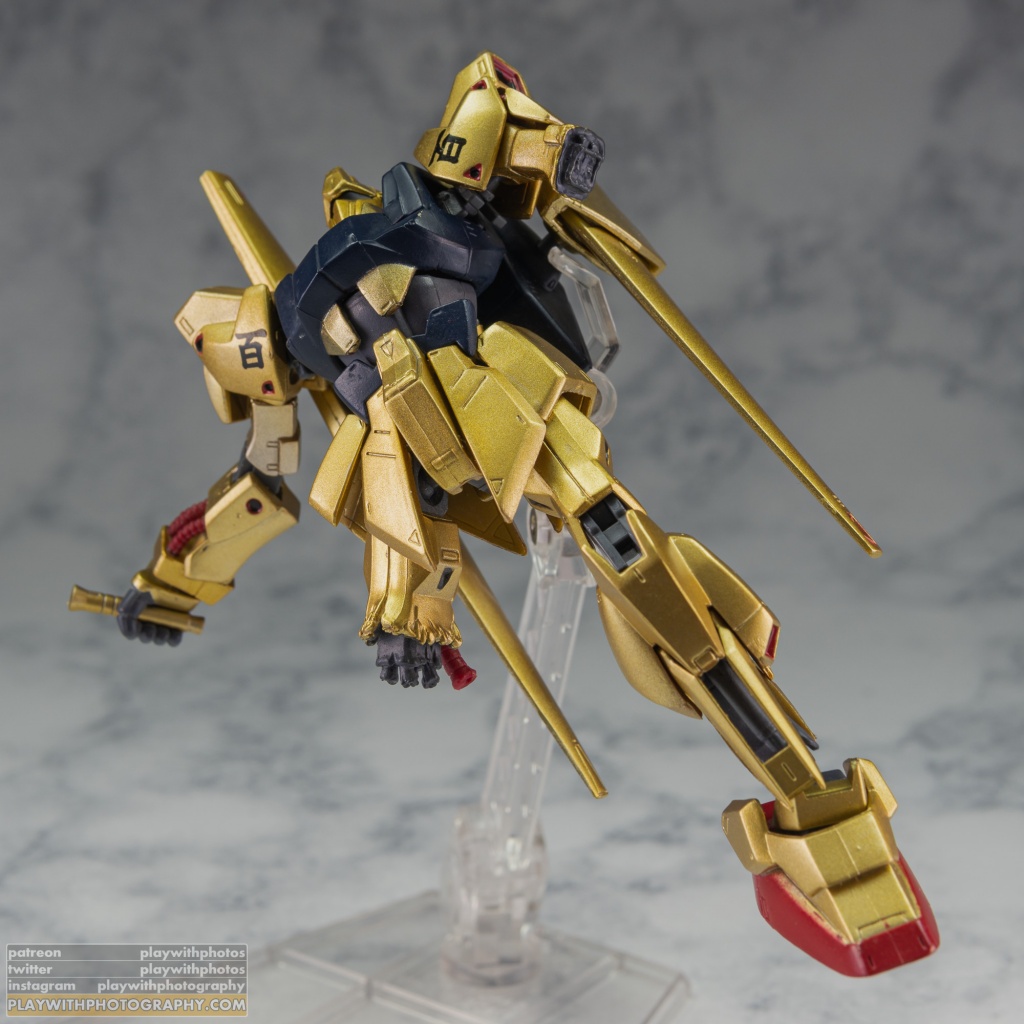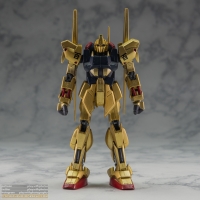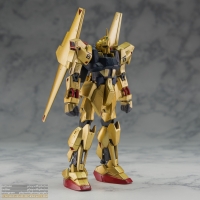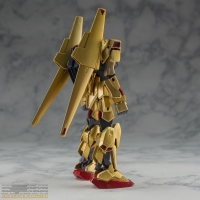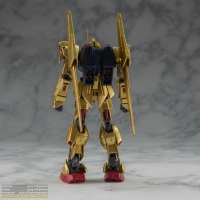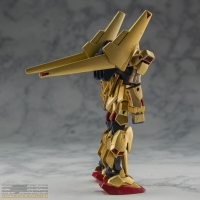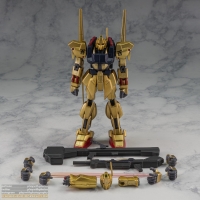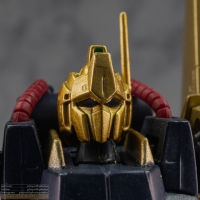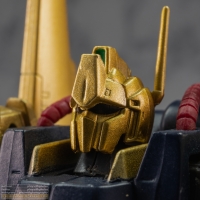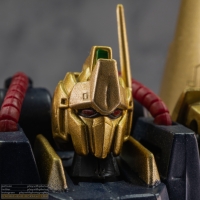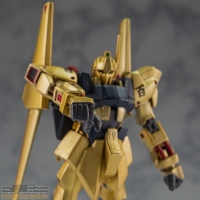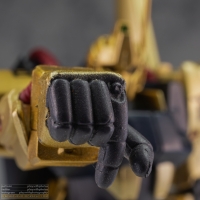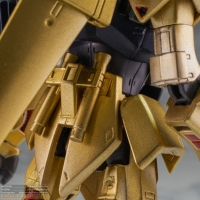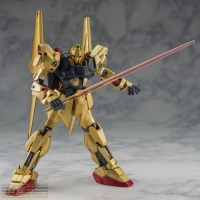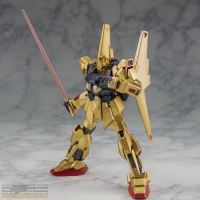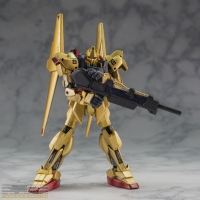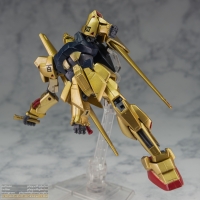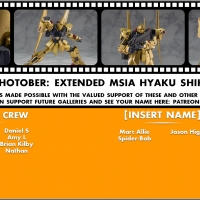The Gouf on Monday was one of the very earliest MSiA designs. The Extended MS in Action (EMIA) Hyaku Shiki was not quite from the opposite extreme, but it was a good distance in the line’s lifespan. The Extended series picked up from what had been the “Second Version” entries in regular MSiA, where early figures would be completely remade to match the standards of the line – or very frequently, to set new standards in the line. The original Hyaku Shiki was from pretty early on, and while it was better in many ways than the Gouf or even the original Gundam, it was in sore need of updating for a long while. The Zeta Gundam movie trilogy from the mid-2000s was the motivation that finally led Bandai to come back around to it.
Supporters on Patreon make content like this possible! If you’d like to join, get your name on a credit page, access to early first looks, and help me continue to make more galleries and other assorted nonsense, click here or on the image above to head to Patreon and sign up!
One key feature that was advertised in the original promotional period for this figure was some kind of new process of realizing the Shiki’s gold coloring. True enough, when the figure was brand new, the gold was bright and clean, and the finish seemed to be surprisingly durable. Even all these years later, most of it is still holding up. There’s some chips and scrapes here and there on my copy, but that’s not surprising. What is a little more surprising to me is how many areas now look more silver than gold. I think some of the gold top coat has faded with age, which is… disconcerting.
The EMIA Shiki was one of those things that helped to again redefine what could be expected from MSiA in general. It had a complicated and robust range of articulation. The shoulders are triple jointed, with a butterfly hinge, and upward hinge, and the ball joint that the arms are actually attached to. The knees are also multiply jointed, with a double hinge plus a ball joint for maximum limb mobility. The ankle also uses novel combinations of ball joints and swivels to free up the feet in unexpected ways. And this is basically ignoring the torso ball joint and double jointed neck. Mind you, all of this was still years ahead of SH Figuarts, and in a figure only a little over half the size.
The downside to all this is age, though. Many of the joints on this copy have loosened a distressing amount merely under the weight of the attached parts. The torso joint in particular is pretty floppy these days, which is the most readily noticeable symptom of the problem. Handling the figure for the time it took to prepare for and carry out the shoot kind of made me want to look for a new-in-box replacement in hopes that its joints would be in better condition.
The Shiki came with a respectable array of accessories, though the majority are merely replacement parts. Multiple hands are included besides the default fists. Trigger finger hands and saber holding hands for the left and right, plus two special-purpose hands. One is a spread open left hand, which while having uses in expressive posing on its own, is more meant to support either of the weapons. The right hand is a fist with the index finger slid down to reveal the birdlime chemical launcher. It’s impressive to me that they were able to represent such a small detail as the nozzle behind the finger so clearly and cleanly.
The beam saber grips store on the rear skirt plate, and stay securely. I’m pretty sure that the Shiki came with two saber blades originally, but, uh, I could only find one of mine. That’s enough for demonstration purposes, at least. Also the figure came with pink blades, but I could have swore they were yellow in animation. Maybe this was a movie trilogy thing…
The beam rifle exacerbates the loose joints issue. While the arms are in good enough shape to hold their own poses as well as supporting a beam saber, the rifle is a little too much. Add to this that the trigger finger hands don’t really want to grasp the grip very solidly anymore, and posing with the rifle is not a lot of fun anymore. Despite that, I couldn’t move along without at least showing the saber blades’ alternate use as rifle beams. Either useful as the rifle being shot, or for the occasional desperation-weapon mode where rifles could create beam saber blades.
If the rifle is too much for the arms, the clay bazooka for sure would be, but fortunately the way it has to be held lets it brace against the body so the issue isn’t nearly as obvious. This bazooka has actually been living with one of my Rick Diases since it’s so much nicer than the clay bazookas they came with. As a nice extra detail, the ammo magazine can be removed from the bazooka, and posing mid-reload is pretty easily possible!
An alternate head is definitely based off a shot from the movie trilogy, where the Shiki’s normally unilluminated black visor lights up with red eyes for a scanning effect. Swapping the head is a little more of a chore than it ought to be, as the double jointed neck tends to want to pop out from the body before it lets go of either head. Also the antenna is not soft material at all, so taking care when pushing a head back on is highly advised.
Finally, more scene recreation can be done with swap out stubs for one leg and one arm. The arm could go on either side reasonably enough; there’s nothing to it really that defines it clearly as left or right. The leg has to go on the right because of the shape of the armor around the hip socket. This is most useful with a Tamashii Stage or something to suspend the figure, but once you do that, a damaged-and-drifting Hyaku Shiki is easily set up. These are fun extras, and were a good way to up the accessory count for a suit that was never really known for having much in the way of special equipment. The only other thing the Shiki was really notable for, the Mega Bazooka Launcher, was sold with another figure instead.
The EMIA Hyaku Shiki wasn’t the end of MSiA development, but it was more or less the height of advancement, and it never felt like anything that followed quite beat it out in terms of overall evolution. Unfortunately by the time the Shiki came out, MSiA would only have a couple more years left in it anyway; Bandai’s merger with Namco seemed to be what sealed the line’s fate as the pace of releases would slow, and the design complexity began to regress. But we sure did get a lot of really nice stuff before the decline.
Only a few days left for Photober – come back tomorrow to see what’s next on Photober the 29th!

